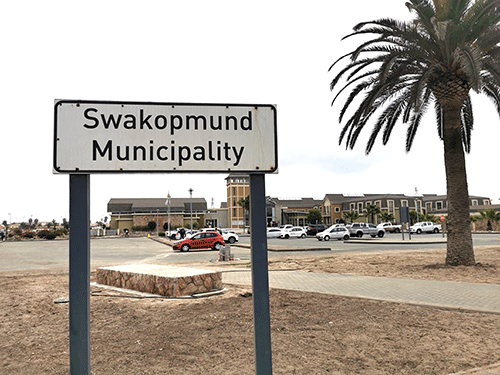SWAKOPMUND – Standing at the forefront of urban innovation in Namibia, Swakopmund has become the first town in the country with an officially approved result-driven structural plan.
The comprehensive blueprint emphasises integrated development across all sectors, aiming to transform Swakopmund into a pioneering smart city.
In anticipation of this growth, the Swakopmund council invested over N$28 million in its sewerage infrastructure.
These critical upgrades over the years were necessary due to the growing housing demands of the town’s over 75 000 inhabitants, which put a strain on the infrastructure.
“However, since 2014, we identified ten critical projects to enhance the sewerage infrastructure. These projects included the establishment of 26 pump stations, the construction of a new wastewater treatment plant and the strategic relocation of sewer lines. Before the pipes were relocated, many residents faced frequent sewage spills in their yards, particularly affecting the Mondesa township,” Clerence McClune, the engineering department general manager said.
He explained that the town in the past experienced blockages and overflow of sewage in some parts, as the previous system was not designed to accommodate the growing population, coupled with increased business activities.
The overarching goal is to create vibrant, liveable spaces, w hile strategically preparing the town for future growth and development.
Over the years, the number of residents in the informal settlement has also increased and saw the creation of new townships, such as Matutura and the DRC extensions, where the construction of houses has been taking place.
In view of this, he said, the council also embarked on installing sewerage systems in these areas to ease the flow and minimise blockages.
Although there are concerns, the municipality is evaluating whether the existing system can handle the additional load in terms of new housing and township establishment or if a major infrastructure upgrade will be required.
McClune further emphasised that while significant strides have been made, ongoing urbanisation and population growth continue to exert pressure on the town’s infrastructure.
The municipality is committed to further improvements but faces constraints due to financial and logistical challenges, he assured.
Future projects will focus on accommodating this growth, as well as ensuring the efficiency and reliability of the sewage system, he continued.
Overall, the extensive upgrades have led to a noticeable reduction in blockages and spills, particularly in problematic areas, such as Mondesa.
However, as McClune pointed out, the issue of blockages can never be eliminated due to the nature of what is sometimes disposed of into the system.
Commitment
Adding her voice, Swakopmund mayor Dina Namubes said the council will continually invest in upgrading the various municipal infrastructures, such as sewerage, water and road facilities.
Apart from the millions invested, an additional N$14 million was also spent on vehicles and machinery to aid in the removal of blockages, as well as to respond to calls of sewerage complications.
“These upgrades represent more than just improved infrastructure. It signifies our commitment to sustainability, efficiency and resilience in the face of challenges. By investing in our sewerage system, we are investing in the future of our community, ensuring that it remains a safe, healthy and vibrant place for generations to come,” she said.
She said, “As our community continues to grow and evolve, so too must our infrastructure. Let today be a reminder of the importance of ongoing maintenance, innovation and investment in the systems that support us”.
Residents
In addition, Swakopmund CEO Archie Benjamin said they owe all development undertakings and upgrades to loyal residents who continue to pay their rates and taxes.
This money is reinvested in development, he said.
“They see that houses are being built and erven are being allocated. The town is clean and beautiful. On top of that, there is always communication between the council and residents through community meetings,” Benjamin said.


